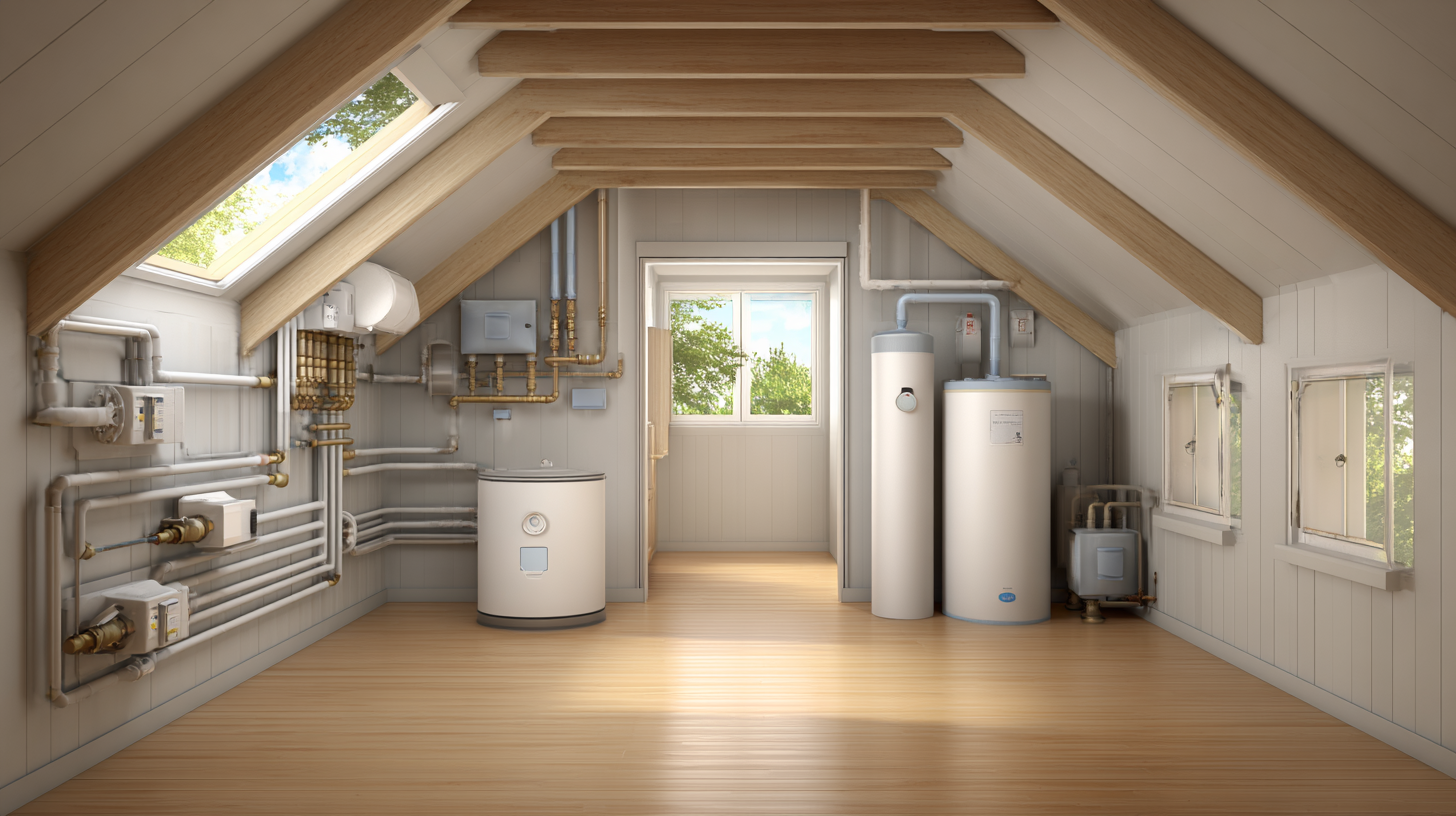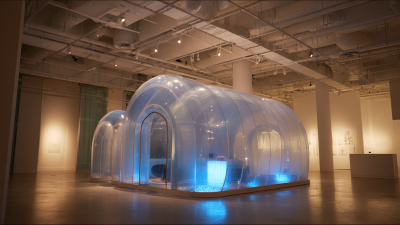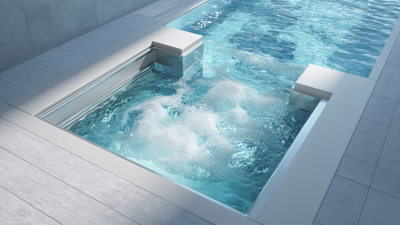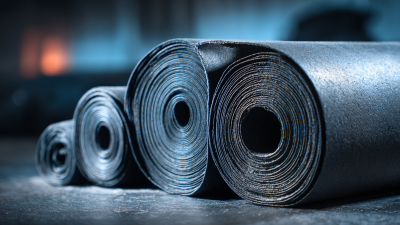Leave Your Message
As homeowners increasingly seek solutions to enhance energy efficiency, the role of innovative technologies becomes paramount. One such advancement gaining recognition is the Air Chamber, a component that helps in maximizing thermal performance within residential spaces. According to a study conducted by the Department of Energy, the integration of air chambers in building designs can significantly reduce energy consumption, achieving savings of up to 30% in heating and cooling costs. This aligns with the growing emphasis on sustainability, as more than 50% of energy used in homes goes toward climate control.
Implementing air chambers not only improves energy efficiency but also contributes to comfort and indoor air quality. Research from the National Renewable Energy Laboratory highlights that homes equipped with effective air chambers maintain more stable temperatures throughout the year, minimizing the strain on HVAC systems. Furthermore, the utilization of air chambers supports the push towards environmentally friendly practices, as reduced energy demand results in lower carbon footprints. As we delve into the top benefits of using air chambers in your home, it becomes evident that this technology offers a multifaceted approach to achieving effective energy efficiency and sustainability in modern living.

Air chambers in your home serve as a pivotal element in enhancing thermal regulation. By creating insulated pockets of air, these chambers significantly reduce heat transfer, ensuring that indoor temperatures remain stable regardless of external weather conditions. According to a report by the U.S. Department of Energy, homes equipped with air chambers can improve energy efficiency by up to 20%, highlighting their effectiveness in reducing heating and cooling costs.
One effective tip for maximizing the benefits of air chambers is to inspect and seal any gaps in windows and doors where air might escape. Proper sealing not only maintains the air chamber's effectiveness but also contributes to improved indoor air quality. Additionally, consider utilizing advanced materials designed for air chambers that offer optimized thermal resistance, which can further enhance your home’s energy efficiency.
Integrating air chambers is not just about immediate cost savings; it can also have a long-lasting impact on the environment. According to a study from the National Renewable Energy Laboratory, improved thermal regulation with air chambers is associated with a reduction in overall carbon emissions from residential buildings. Homeowners should remain informed about potential subsidies for energy-efficient upgrades, which can help offset initial investment costs and promote a greener future.

Air chambers are becoming increasingly popular as a solution to enhance energy efficiency in homes. By incorporating air chambers into your home's design, you can significantly reduce energy consumption and lower utility bills. According to the U.S. Department of Energy, homes that utilize effective insulation systems, including air chambers, can see energy savings of up to 30% on heating and cooling costs. This reduction is primarily due to the additional layer of thermal resistance provided by air-filled spaces, which minimizes heat exchange between the interior of the home and the outside environment.
In addition to cutting down on energy costs, air chambers contribute to a more comfortable living environment. A report from the National Renewable Energy Laboratory (NREL) indicates that homes equipped with advanced insulation techniques maintain more consistent indoor temperatures, reducing the need for excessive heating or cooling. This not only enhances comfort but also diminishes reliance on energy-intensive HVAC systems, further decreasing overall energy demand.
As the push for sustainable living grows, integrating air chambers into modern home designs stands out as an effective strategy for homeowners looking to save money while contributing to environmental conservation.
Improving indoor air quality is essential for maintaining a healthy living environment, and one effective way to achieve this is through better insulation provided by air chambers. Air chambers serve as barriers that mitigate the transfer of heat and cold between the indoor space and the outside environment. This prevents drafts and the infiltration of outside contaminants, which can include dust, pollen, and other allergens that negatively impact air quality. By minimizing these external intrusions, air chambers help maintain a consistent indoor temperature, which not only enhances comfort but also reduces the need for excessive heating or cooling.
Moreover, improved insulation from air chambers can also aid in controlling humidity levels within your home. High humidity can lead to mold growth and an increase in airborne pollutants, both of which can be detrimental to health. When air chambers are effectively integrated into your home, they allow for better regulation of humidity, thereby reducing potential health risks associated with poor indoor air quality. This contributes to a cleaner, safer, and more comfortable living space that benefits all household members.
This chart illustrates the various benefits of using air chambers in your home, focusing on energy efficiency and improved indoor air quality.
Air chambers play a crucial role in minimizing noise pollution within homes, creating a tranquil living environment. These effective air barriers act as sound insulators, absorbing and mitigating noise from external sources, such as traffic, construction, or noisy neighbors. By incorporating air chambers in walls, ceilings, and floors, homeowners can significantly reduce the transmission of sound waves, resulting in a more peaceful atmosphere.
Moreover, the design of air chambers helps in enhancing overall energy efficiency, which can further contribute to a quieter home. When walls are properly insulated with air chambers, not only do they minimize sound, but they also reduce the amount of heat loss in the winter and heat gain in the summer. This dual function not only helps in maintaining a comfortable indoor temperature but also lowers energy bills, as heating and cooling systems do not have to work as hard. Thus, investing in air chambers serves a twofold purpose: promoting a serene living space while optimizing energy consumption.

Air chambers are a valuable addition to a home, significantly contributing to the longevity of both its structure and systems. By creating thermal barriers, these chambers help to regulate temperature fluctuations, reducing strain on heating and cooling systems. This consistent temperature control not only enhances comfort but also minimizes wear and tear on HVAC units, ultimately extending their lifespan and reducing maintenance costs.
Additionally, air chambers play a crucial role in moisture management. They act as buffers, preventing excess humidity from entering building materials. This protection helps to reduce issues related to mold and structural deterioration, which can be costly to remediate. By ensuring that foundational elements remain dry and intact, air chambers safeguard a home’s integrity over time, allowing both the structure and its systems to function optimally for years to come.
| Benefit | Description | Impact on Energy Efficiency | Longevity of Home Structure |
|---|---|---|---|
| Improved Insulation | Air chambers reduce heat transfer and enhance thermal insulation. | Lowers heating and cooling costs. | Prevents structural damage from temperature fluctuations. |
| Noise Reduction | Traps sound waves, resulting in a quieter home environment. | Reduces the need for soundproofing materials. | Minimizes wear from external noise-related stress. |
| Moisture Control | Helps manage humidity, preventing mold and water damage. | Enhances indoor air quality and reduces energy cost related to HVAC systems. | Extends the life of structural components exposed to moisture. |
| Energy Savings | Decreases energy consumption through better temperature regulation. | Can result in significant utility bill reductions. | Lowers the frequency of repairs due to energy overflow leading to structural issues. |
| Environmental Impact | Reduces overall carbon footprint by increasing energy efficiency. | Promotes sustainable energy practices. | Supports longer-lasting materials and fewer replacements. |
| Increased Home Value | Energy-efficient homes are more attractive to buyers. | Can lead to higher resale values. | Better maintained homes appeal more to potential buyers. |
| System Longevity | Reduces wear and tear on HVAC and structural systems. | Decreases frequency of system replacements. | Extends the lifespan of critical home infrastructure. |







